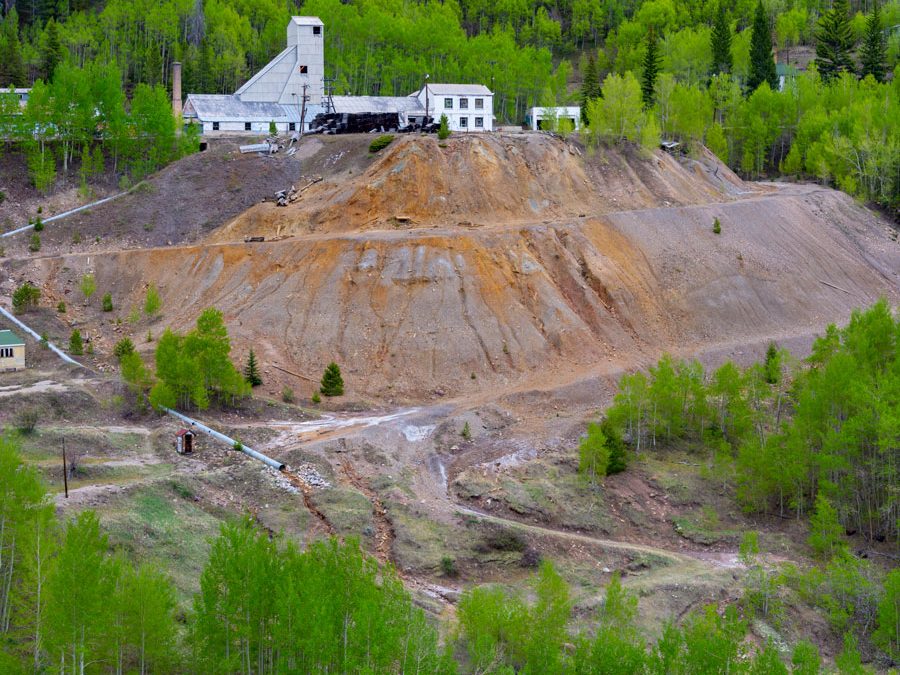When the U.S. Bureau of Reclamation bought a tunnel that drained water from a mine near Leadville in 1959, the federal agency thought it was purchasing an additional water source. Instead, it bought into a problem that requires ongoing clean-up. Miners dug the tunnel during the 1940s and 1950s to drain a lead and zinc mine near Leadville. What Reclamation found, in water that might have supplied Front Range residents, was lead, zinc, manganese and iron, and an acidic pH.
Aquatic life downstream in the East Fork of the Arkansas River was suffering. So in 1991, the agency built and still manages a treatment facility, the Leadville Mine Drainage Tunnel Treatment Plant. An 18-square-mile area around this and other components of the Leadville Historic Mining District had already been designated a Superfund site in 1983. Just this year, as the current treatment plant nears the end of its service life, the agency allocated $56 million from the Bipartisan Infrastructure Law for updates.
That’s just one example of about 1,400 stream miles around Colorado, generally near the “mineral belt,” which spans the state from Boulder County to Durango, with water quality impacts leftover from the state’s mining legacy. Mines dug before regulations limited pollution and other environmental impacts continue to leach contaminants into waterways.
Now, since 2019, as the state and federal government continue cleaning up legacy waste, permitting new mines comes with a stipulation to avoid situations like the Leadville tunnel: No permits or mine plans can rely on perpetual water treatment.
Before the state approves a new mine permit, says Michael Cunningham, director of the Colorado Division of Reclamation, Mining, and Safety, the mining company has to demonstrate a plan for addressing environmental impacts both while operating and after reclamation, sometimes planning decades into the future.
“You just have to have solid technical assurance in that plan that whatever those issues are, they can be mitigated and water quality can be protected,” Cunningham says.
Most of the 1,251 mines permitted today in Colorado are for construction materials like gravel and sand, but the 130 hard rock mines, which primarily extract gold, molybdenum and silver, account for most of the division’s work and concerns, says Russ Means, director of Colorado’s minerals regulatory program. Construction materials sites are more often “high and dry” — away from the rivers and streams, Means says. But those sites could still impact water quality, says Josh Kuhn, with Conservation Colorado.
“There absolutely should be greater oversight,” Kuhn says. “We also want to think about the future, too, and the need for lithium, cobalt, and materials needed to advance a more carbon-free economy. Those minerals are going to be critical for our batteries and solar panels, so we want to be sure we have the proper regulations in place for the extraction of those minerals.”
In late 2022, United Lithium Corporation staked claims with the U.S. Bureau of Land Management on more than 9 square miles in Pitkin County, near Gunnison, which could become the first potential commercial lithium mine in Colorado. If the mining company’s evaluations of those claims merit exploration, they would file paperwork with the state to begin prospecting, but that step is likely years away.
Independent journalist Elizabeth Miller has written about environmental issues around the American West for publications including The Washington Post, Scientific American, Outside, Backpacker and The Drake.


 Print
Print